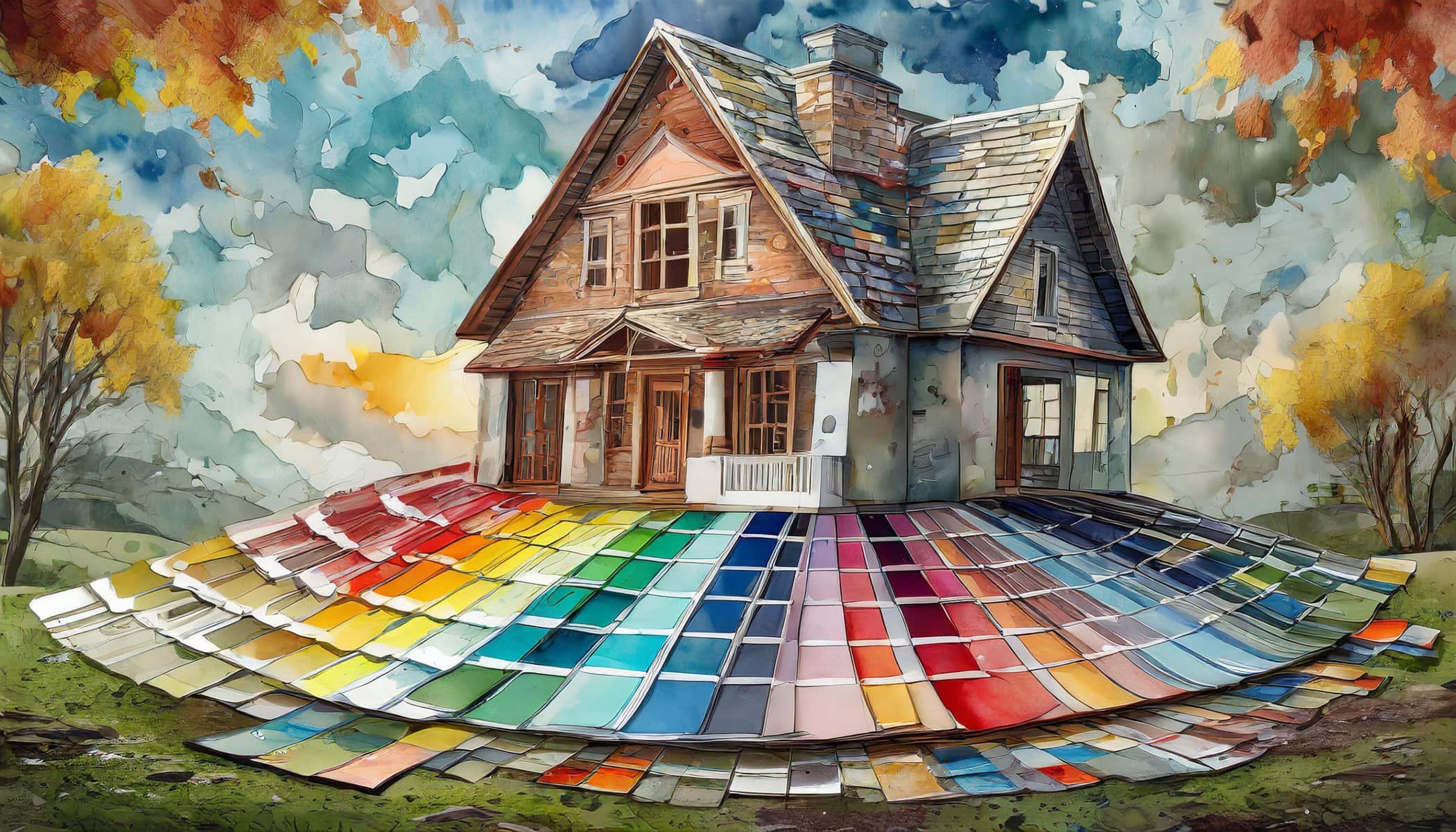So, you’ve decided it is time to paint the exterior of your house and are feeling a little trepidatious.
That’s OK – since everyone knows of at least one home painted in colours that make folks scratch their heads and wonder, “What were they thinking?”
On the other hand, a great paint scheme can transform a ho-hum house into a masterpiece.
Whether you are going to choose your paint scheme on your own or hire a design consultant to develop a palette with you, the acquisition of basic knowledge about colour theory will be invaluable in managing the process to success.
Let’s start off by defining some basic terms associated with colour theory.
Colour is a natural phenomenon of the human vision system, which is interpreted as having three principal components: hue, value and saturation.
When those three are put together, you have a specific colour.
These three principle components can be defined as:
- Hue – The major determining characteristic of a colour. Red, green, and blue are hues.
- Value – How light or dark a colour is.
- Saturation – How intense or diffuse a colour is.
Then we move on to the terms associated with modifying hues:
- Tint – Add white to any hue and you have a tint.
- Tone – Add grey to any hue and you have a tone.
- Shade – Add black to any hue and you have a shade.
Note that deeper tones or shades are more light absorbent and therefore will stand off – or be more contrasting – against a tint.
And, to complete the basic designer/colourist lingo, we have:
- Muted colours – Desaturated colours that are “greyed down” (tone) and, while you can still see the base colour, are not bright and clear (reduction in both value and saturation).
- Neutral Colours – A general descriptor of desaturated colours (greyed down and/or lacking colorfulness) and typically include greys, whites, off-whites, blacks, creams, beiges and “greiges.”
Now that we have some of the basic nomenclatures, let’s poke around a bit in colour theory.
In 1704, Isaac Newton published the book “Optiks” in which he detailed the results of his experiments utilizing a prism to split white light into a spectrum of hues from red to purple (and all colours in between).
Based on these results, he theorized that red, yellow and blue were the primary colours from which all other colours are derived.
Then, he added secondary colours – each derived from mixing two primary colours in equal proportions – which are violet, orange and green.
Finally, he added tertiary colours – yellow-orange, red-orange, red-purple, blue-purple, blue-green and yellow-green – which, as you may intuit from the names, are a mix of one primary colour and one secondary colour.
To illustrate this, his book contained a plate that showed the relationship of each colour to every other colour in the shape of a segmented wheel.
Over the last 300 years, colour wheels have been developed to, at one extreme, address the needs of colour “nerds” and, at the other, a very practical tool for everyday use.
It’s this simple, inexpensive, practical tool – commonly available at many retail outlets – that is invaluable in understanding colours and colour relationships.
If you don’t have one, it’s something I’d suggest you may wish to acquire.
So, let’s take a quick look at the colour wheel.
On the outside edge of the first side are 12 segments, each of which represents a single “pure” colour.
These colours are divided into two equal groups – the six colours between yellow-green and violet (inclusive) are “cool” receding colours, while the other six (red-violet to yellow) are “warm” advancing colours.
A rotating disc displaying five segments, each of which is pierced by a window, allows one to see the effect on the underlying colour when it is mixed with red, yellow, blue, white and black respectively.
The opposite side of the colour wheel relates more directly to developing colour schemes.
Here we have the same 12 pure colour segments, but in this case, the windows in the rotating disc expose the tint, tone and shade of each colour segment.
Moreover, the centre of the disc helps to identify colour relationships in terms of harmonious colour schemes.
At this point, it behooves us to examine these harmonious colour schemes in a little more detail moving from simple to more complex.
The most straightforward of the schemes is monochromatic. That is, a palette that involves just one colour segment but contains two or more values (tints, tones, shades) of that colour – e.g. light, medium and dark green.
Monochromatic colour schemes are usually subtle, conservative and can be very sophisticated if properly executed.
This scheme can be quite effective when integrating your home into an established traditional streetscape.
An analogous (or adjacent) colour scheme employs colours that are next to one another (for a three-colour palette) or conjoined series (four-colour palette) on the colour wheel.
For example, a three-colour palette may employ colours from the blue, blue-green and blue-violet segments while a four-colour palette may add an additional colour from each of the green and violet segments.
Generally speaking, analogous palettes do not employ high-contrast colours and are used to create a softer, more muted design.
This is a great scheme for establishing a “warm” or “cool” colour palette.
It should also be noted that, in my experience, a five-colour palette should be used with caution – deploying the additional two colours simply for subtly, emphasizing or shadowing particular architectural details.
Complementary colour schemes are very straightforward but also somewhat dangerous if care is not taken to ensure the contrasting colours are not too “lively” (read: garish).
In this case, we simply choose our colour scheme from directly opposing sides of the colour wheel – red and green for example.
To avoid the danger zone, it is best if one colour is dominant (main field) while the other colour is reserved for use as an accent (trim) and no pure colours are selected.
A variant of this theme is the split complementary scheme wherein one dominant colour is chosen and the other two colours are drawn from the segments directly adjacent to the dominant color’s complement.
If, for example, blue was the dominant colour, then we would draw our secondary colours from the red-orange and yellow-orange colour spectrums.
This scheme creates a more nuanced colour palette than a complementary colour scheme while still retaining the benefits of contrasting colours.
However, it can also be somewhat tricky to find the right balance or hierarchy between the dominant and secondary colours.
If you are brave, educated in colour selection and a bit of a risk-taker, you could venture into the triadic colour schemes: three colours that are equidistant on the colour wheel (blue, yellow, red for example).
However, you will need to understand that to avoid an overpowering result, there must be one dominant colour and use the others sparingly, or simply subdue the other two colours by choosing a softer tint.
The other schemes, rectangular and square tetrad, involving a complicated interplay of four colours should be strictly left to a professional designer.
And, if you walk into a paint store with your colour wheel and ask to see all the variants of a particular colour segment, it will expedite your shopping.
Hopefully, we have visited enough of the basics for you to successfully manage your paint project, but if not, feel free to contact me at homeguide.ca@gmail.com with any questions.
Brian Marshall is a NOTL realtor, author and expert consultant on architectural design, restoration and heritage.











